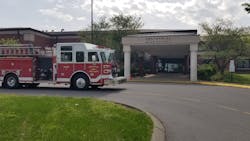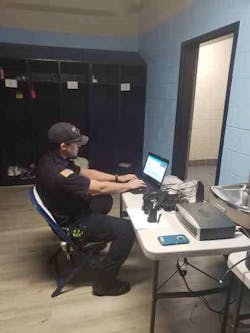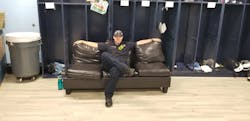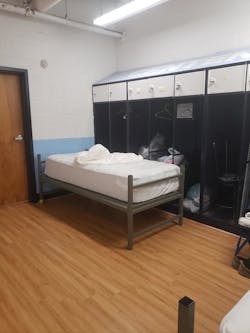COVID-19 Playbook: Satellite Fire Station Helps Flatten the Curve
With news reports of COVID-19 spreading through fire halls and departments, how do we flatten the curve among firefighters when the nature of their job is to live in close quarters and be in close contact with one another and citizens who might be affected?
A major effort that we are attempting to do here in the Franklin, TN, Fire Department is by taking Centers for Disease Control and Prevention (CDC) distancing guidelines to heart. To reduce the number of personnel at each station, we’ve created five temporary satellite stations. Our department’s personnel and resources, which previously were housed at eight fire stations—several of which were multi-company stations—are now distributed across 13 single-company fire stations. We now have no more than four personnel per location.
Additionally, our three battalion chief shift commanders who previously shared the same vehicle and room assignment, have now been assigned to different vehicles and stations. This reduces the risk of losing those serving in key leadership roles simultaneously.
Below are the items we took into consideration to quickly make the temporary stations a reality that you may find useful in your own department.
Temporary station site criteria
These were our top five criteria when selecting the satellite station locations:
- Geographical location and easy access
- Bathroom with shower — bonus if male/female facilities
- Ability to isolate crews from the public as much as possible
- Access to power for technology, personnel use, and shorelines for apparatus
- Access to refrigerators, microwaves or cooking areas, and washers and dryers
The first location was simple—our fire department training center. Then, working with our city facilities manager, we looked at other options within existing city facilities. We were able to identify one additional site that fit our needs in the city hall TV studio, which has its own private entrance (city hall is closed). That left us with the need to find three additional sites.
We have a good working relationship with the two public school districts in our city. We approached them and quickly came to agreement to use their schools. A backup option that we explored was fitness centers, which we believe would have also worked well.
One high school and two elementary schools were chosen. We found that elementary schools with special education or physical therapy rooms often have a full bath with showers and usually have a washer and dryer. High school locker rooms have great shower and bathroom facilities too.
Temporary station needs
After we identified the sites, our team met and divided the move-in needs of each temporary station into five separate categories and assignments, which was very helpful to quickly and efficiently make the transitions:
1. Technology
- Radios — Crews are using the portable radios from their apparatus at the remote stations. The loss of a station alerting system meant those at the temporary stations were hearing every call. We were able to push out an over-the-air reprogram to each portable to cut down on some of the radio traffic. This allows units to only monitor the dispatch channel and eliminates the scan of other channels when on the dispatch channel.
- Chargers — Since we have bank chargers at each permanent station, we had to place an immediate order for individual chargers for each portable radio at the temporary stations.
- Laptops — We reassigned some of our training laptops to each satellite location so the crews could maintain connectivity to the city’s network and still be able to complete reports.
- WiFi — We had some backup Cradlepoint mobile routers awaiting placement on apparatus that we re-purposed to create hot spots for connection to our city’s network. Additionally, our school hosts are allowing personnel to connect to school WiFi for personal use.
Our tech personnel were instrumental in making sure firefighters at the temporary stations could interface with their shift commanders and other personnel via video conference.
- We considered contracting with a caterer but chose to provide employees with a $20 per diem per day. They are able to patronize local restaurants, which also need support right now, and take advantage of curbside service and delivery offers.
- All locations have some sort of refrigerator and microwave available.
- Coffee makers — Need I explain? Must keep the troops caffeinated! If not available, we purchased cheap Mr. Coffee makers.
- Grills — May have to purchase, or bring from home, inexpensive grills for personnel to use. Trying to keep up morale.
3. Apparatus:
- Ease of access for respdonding vehicles.
- Parking area — out of public view is ideal
- Power supply for Kussmaul shoreline — needed outside 120v plugs to charge the trucks
4. Administrative:
- Basic office supplies needed to continue work as normal
- Beds — we offered personnel the option of cots issued from the county's Emergency Management Agency or the use of their own beds from the stations (they just had to move them themselves)
- Plastic totes — used for bedding storage or bunker gear storage, if need be
- Paper plates and plastic utensils — to avoid washing dishes
- Cleaning supplies — disinfectants, wipes, sanitizer, soap, brooms mops, toilet paper, paper towels, etc.
- Laundry — we are not allowing personnel to wear uniforms home for the duration, so we have either identified washers/dryers at the location they can use, or arranged for them to drop off laundry at home stations for wash using best isolation techniques
Temporary station set up
When setting up locations we determined “clean” and “dirty” rooms for separation between dayroom/sleeping areas and turnout storage for our personnel’s welfare and health.
When assigning apparatus, we decided to put our engines at the satellite stations, with aerial apparatus and ALS equipment remaining at home stations. This was decided in order to protect our most costly equipment.
Lastly, we have been checking in daily with the satellite station crews, in some form or fashion, to make sure they are doing OK and not feeling like they are on an island all alone.
Other departmental changes
Of course, this pandemic has affected every level of our organization. Below are some other areas where we have made modifications.
Emergency Medical Modified Response — Following CDC guidelines, dispatch is questioning callers to determine if the patient has signs or symptoms and risk factors for COVID-19. We’ve modified our response to medical calls, mirroring guidelines many volunteer departments adhere to. If EMS (which also responds to provide transport) is more than eight minutes away, we will respond. If they can be there in less than eight minutes we are staying put. We will also respond if they request our assistance. We’ve also eliminated 40–50 percent of our calls by cutting out the non-priority “stubbed toe” calls.
Training — Our Training Division has moved or rescheduled training so that anything that can be done via video conference or our training software, TargetSolutions, can still take place. Hopefully this ensures that when the pandemic ends, we won’t have lost too much ground with our scheduled training hours. They have also been suggesting in-house drills for firefighters.
In closing
This is a picture of our “Pandemic Playbook.” It seems we are making major operational changes daily. I know you are, too. Feel free to email me if I can be of service.
About the Author
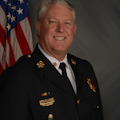
Rocky Garzarek
Rocky Garzarek is the fire chief in Franklin, TN. He began his 40-plus year fire service career with the Rocky Ridge and Center Point fire departments in Alabama. He joined the Hoover, AL, Fire Department in 1977 and advanced through the ranks before retiring as director of training and safety in 2001. Garzarek became deputy chief of operations with the Round Rock, TX, Fire Department in 2001 and served as interim fire chief before accepting the fire chief's position in Franklin in 2004. Under Garzarek's leadership, Franklin has improved their fire protection rating and became an ISO Class 1 agency in 2015 and improved the department’s EMS minimum level of care to ALS.
He is the past president of the International Association of Fire Chiefs' Southeastern Association of Fire Chiefs (SEAFC) and also served the SEAFC Tennessee State Director. Garzarek is a peer assessor for the Commission on Fire Accreditation International, is active on the Tennessee Fire Chiefs Legislative Committee, and was a contributing author/reviewer of the 2004 International Fire Service Training Association Chief Officer manual.
He has a B.S. in Public Administration from Athens State University in Athens, AL, and an A.A.S. in Fire Science from Jefferson State Community College in Birmingham, AL. He is also a graduate of the University of Virginia’s Weldon Cooper Center for Public Service LEAD (Leading, Educating and Developing) program.
